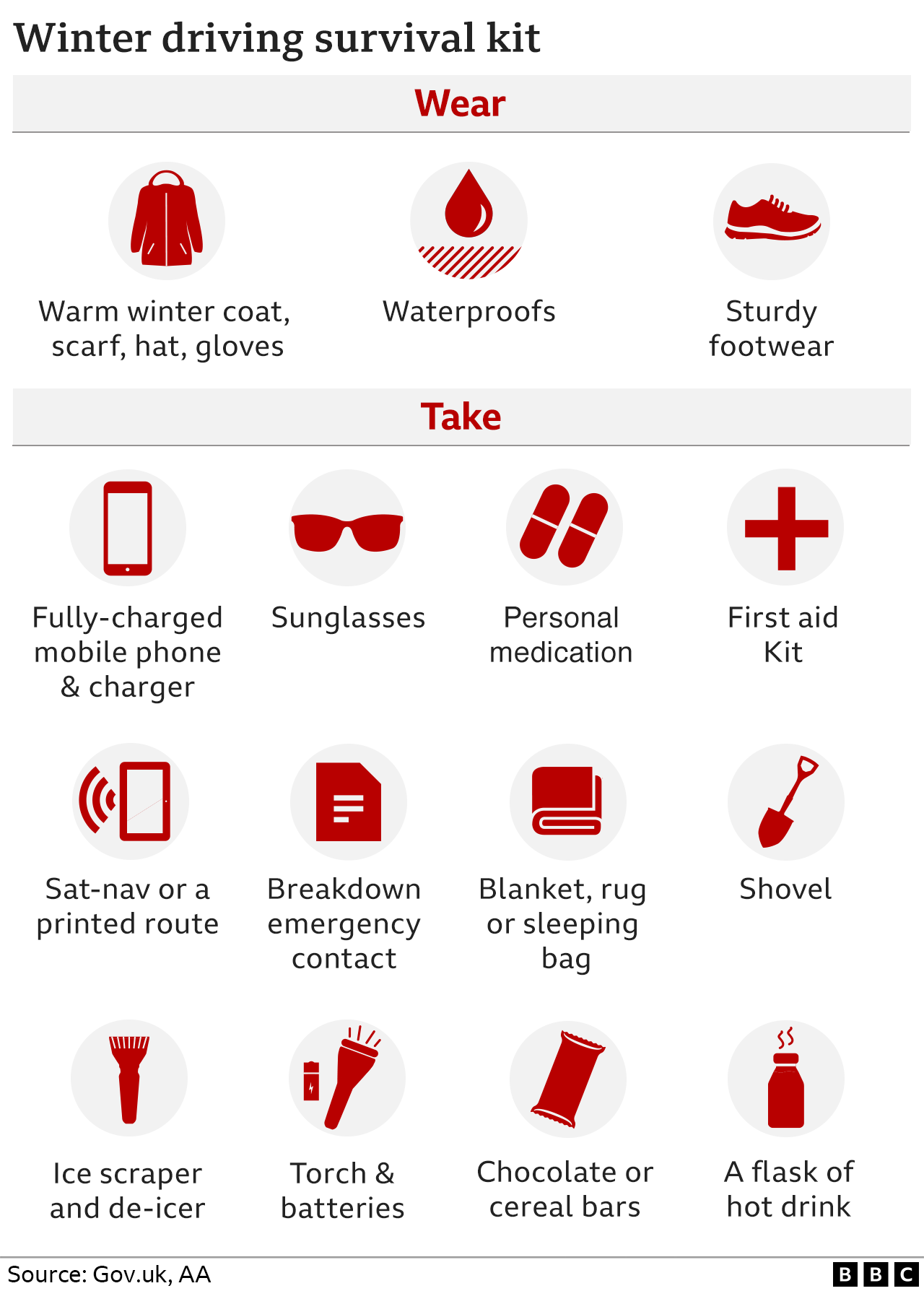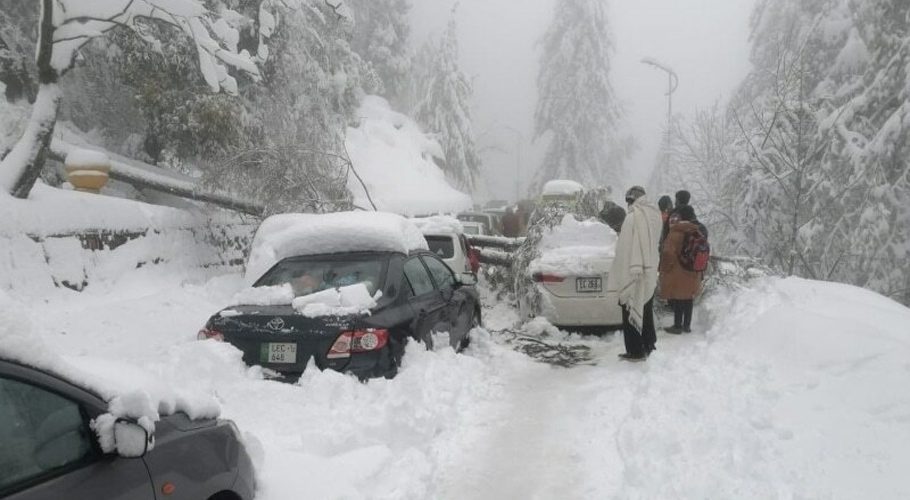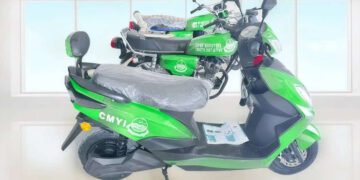![]() Follow Us on Google News
Follow Us on Google News
Driving in severe winter conditions presents numerous challenges, and it’s advisable to avoid it altogether unless absolutely necessary. However, if you must venture out, ensure thorough preparation for your safety.
Before embarking on your journey in snowy and icy conditions, allocate extra time to de-ice your car and anticipate extended travel durations. Stay informed about traffic conditions and plan your route along major roads, typically treated or cleared, steering clear of minor shortcuts.
Bundle up in warm attire and sturdy shoes, including a coat, hat, gloves, and boots. Pack essentials such as a blanket in case you encounter delays or need to abandon your vehicle. Sunglasses might also be necessary in bright weather.

A visual guide highlights items to carry when driving in winter, encompassing warm clothes, a charged mobile phone, medication, a first aid kit, a blanket, shovel, ice scraper, and provisions like food and a hot drink.
Prepare your vehicle for snow and ice by considering winter tires for enhanced traction, maintaining proper tire pressure, and ensuring at least 3mm of tread on standard tires. Regularly take long drives to keep the car battery in good condition or consider using a trickle-charger. Keep the windshield washer fluid topped up and use appropriate anti-freeze. Prevent windscreen wipers from freezing by placing cardboard between the blades and the windshield.
Maintain a full fuel tank to provide warmth if needed. Ensure the exhaust isn’t obstructed by snow to prevent harmful fumes from entering the vehicle in case of being stuck.
When driving in snow and ice, clear all snow and ice from windows, the roof, and the windshield before starting. Avoid using hot water for de-icing as it can crack the glass. Check that lights are clear and functional. In manual vehicles, use second gear to pull away, and in automatics, explore a “snow” or “winter” gearbox mode if available.
Drive at an appropriate speed, avoiding extremes that could lead to loss of control. Brake, steer, and accelerate smoothly, considering the longer stopping distances in winter conditions.
If your car gets stuck, refrain from continuous wheel spinning. Use a shovel to clear snow and provide traction with cat litter, sand, or gravel. Shift between forward and reverse gently until the vehicle starts moving. Run the engine for warmth, but ensure the exhaust is clear of snow to prevent carbon monoxide entry. Stay with or near your car, marking it with bright colors if visibility is poor.























